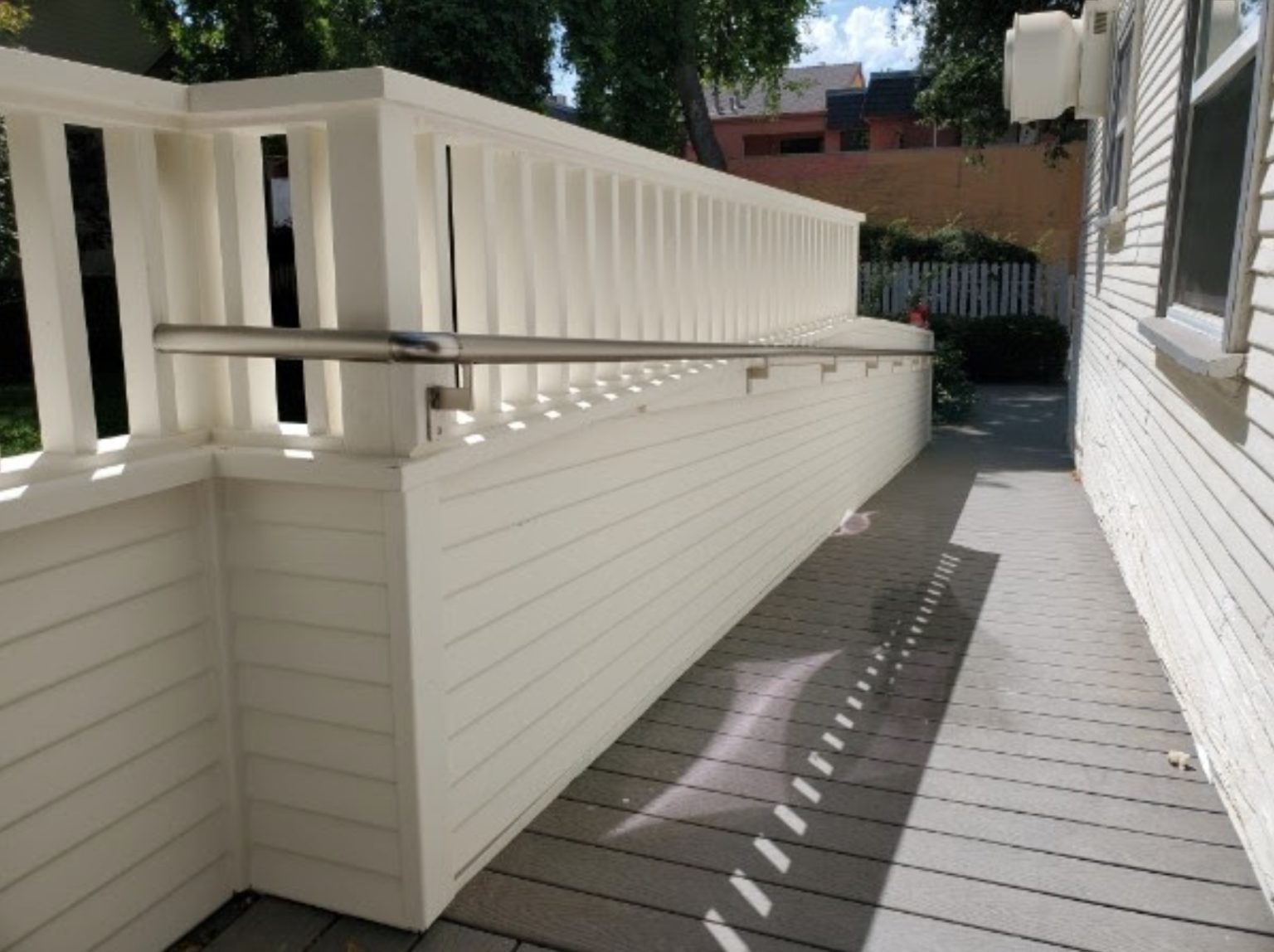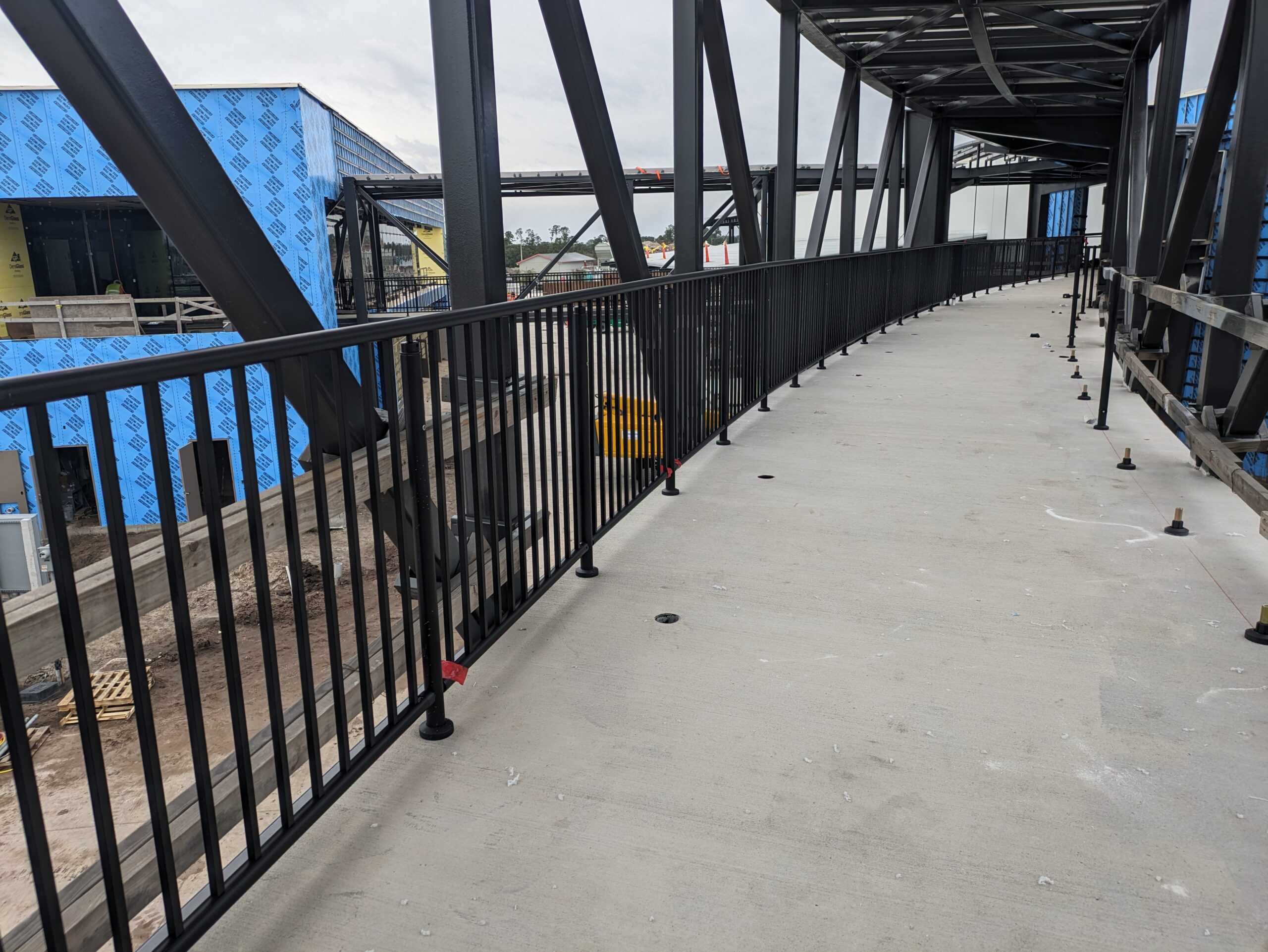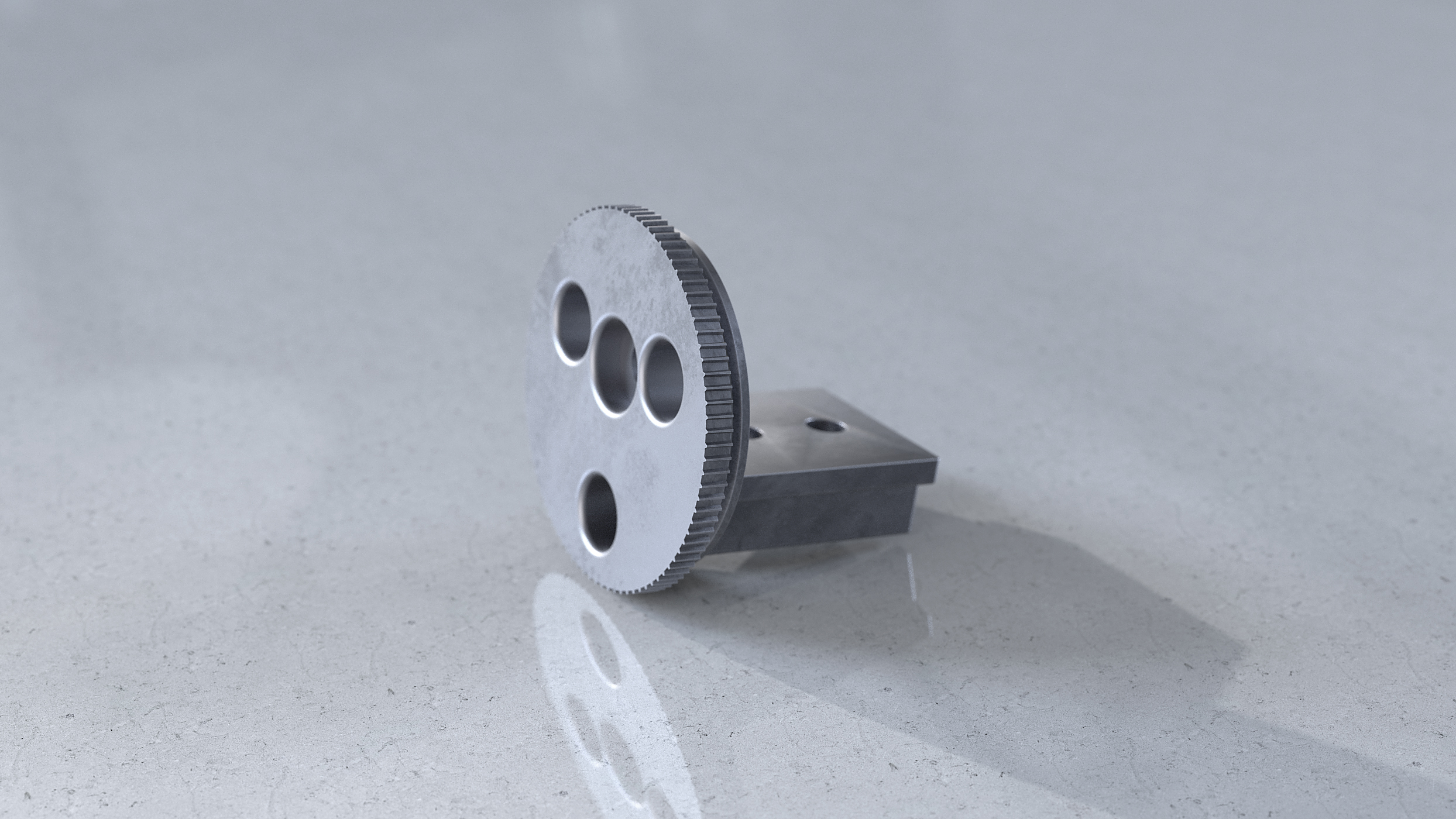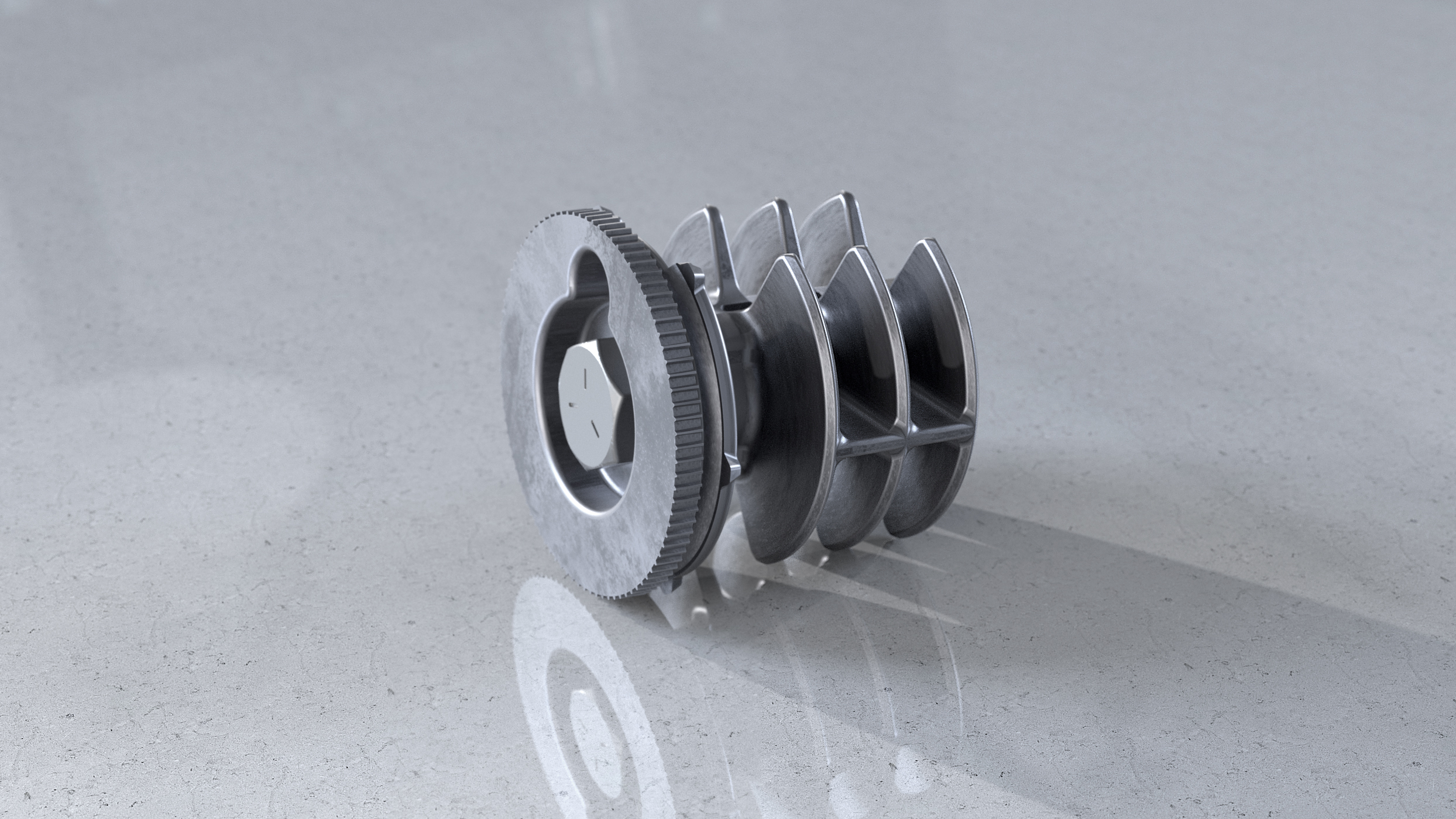ADA-compliant handrails for ramps must meet specific criteria to ensure the safety of those using the ramps. While ramp use is intended for those using wheelchairs or people with stability or mobility issues that would prevent them from using the stairs, ramps are commonly used by everyone, including children. Therefore, meeting ADA requirements not only makes ramp usage safer for the intended users, but everyone can benefit from the added safety.
Promenaid handrails and grab bars are designed with ADA code compliance in mind. Our ADA-conforming handrails make it simple for you to navigate the installation process and comply with the necessary regulations to make your ramps as safe as possible for all users.
There are many misconceptions about what makes an ADA-compliant ramp handrail. For example, are ADA-compliant handrails required to have a “D” loop terminal, or is it sufficient for the handrail to extend beyond the ramp in any shape? While it’s still essential to verify your local building ordinances, you can be sure to find the appropriate handrail fixtures at Promenaid, no matter what you’re looking for. And, with our extensive collection of instructions and how-to guides, you’ll have the confidence and know-how to install a ramp handrail that not only meets ADA regulations but looks elegant and sleek as well. Read on for a brief rundown of what ADA-compliant handrails should look like and how you can achieve these standards with a handrail from Promenaid.
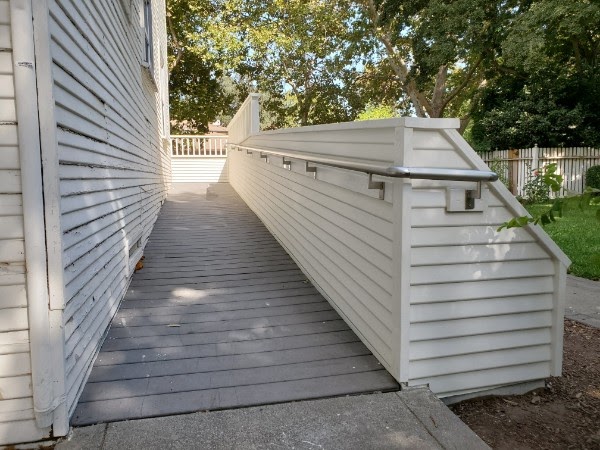 ADA Ramp Handrail Requirements
ADA Ramp Handrail Requirements
Railings on Both Sides
An ADA ramp handrail must meet specific requirements for safety and stability. For example, on a ramp with a rise greater than 6 inches, a continuous handrail must be included on both sides of the ramp and run along the entire length, including on switchbacks or doglegs.
In addition, the top surface of the handrail must be 34-38 inches above the walking surface of the ramp and must be a consistent height along the entire length of the ramp. Alternatively, if the ramp is used in an area that primarily serves children, such as an elementary school, day care or play area, the ADA ramp handrail should be 20-28 inches above the ramp. The handrail must then extend 12 inches horizontally beyond the slope’s end at both the ramp’s top and bottom. This extension must then return to the guard, wall or floor to prevent clothing or bags from snagging on the ends of the handrails.
Single-Sided Rail
ADA ramps that have a rise of 6 inches or less may have a handrail on one side only. The top surface of the ramp handrail must be 34-38 inches above the ramp and continuous along the entire length of the ramp. If the rise is greater than 6 inches, then an ADA-compliant handrail is required on both sides.
Midrail
Including a midrail is not part of meeting ADA compliance, but it is crucial if the ramp is in an area that primarily serves children. To prevent entrapment, the midrail must be at least 9 inches below the single, primary rail. The midrail on an ADA ramp handrail should be 20-28 inches above the ramp and run parallel with the single rail above it to provide extra support for children.
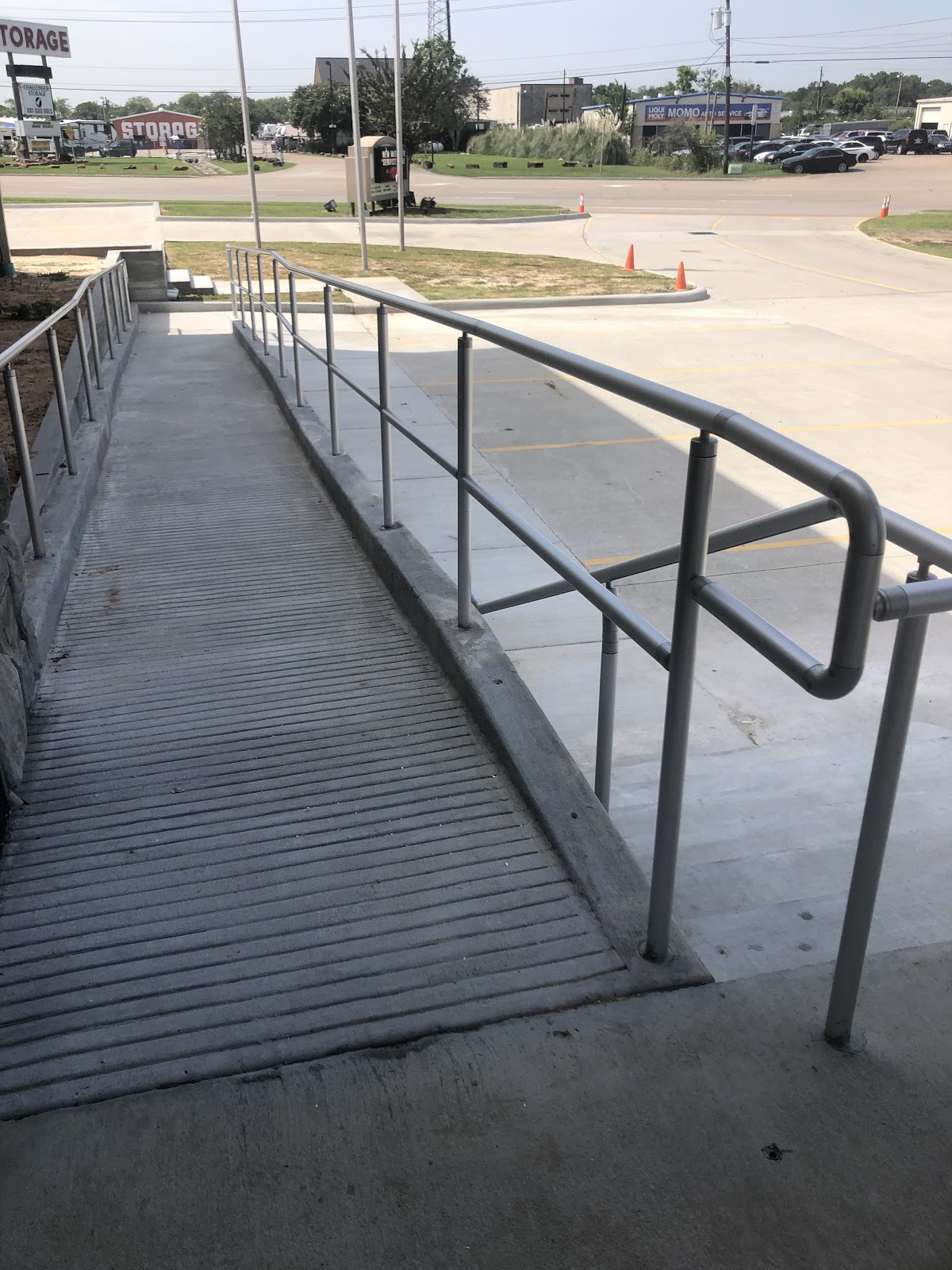 Edge Protection
Edge Protection
Continuous edge protection to prevent canes or wheels from going over the edge of the ramp is mandatory for all ramps requiring handrails. Edge protection can take the form of a curb, as shown above, or a barrier. The space between the ramp surface and barrier must be less than 4 inches.
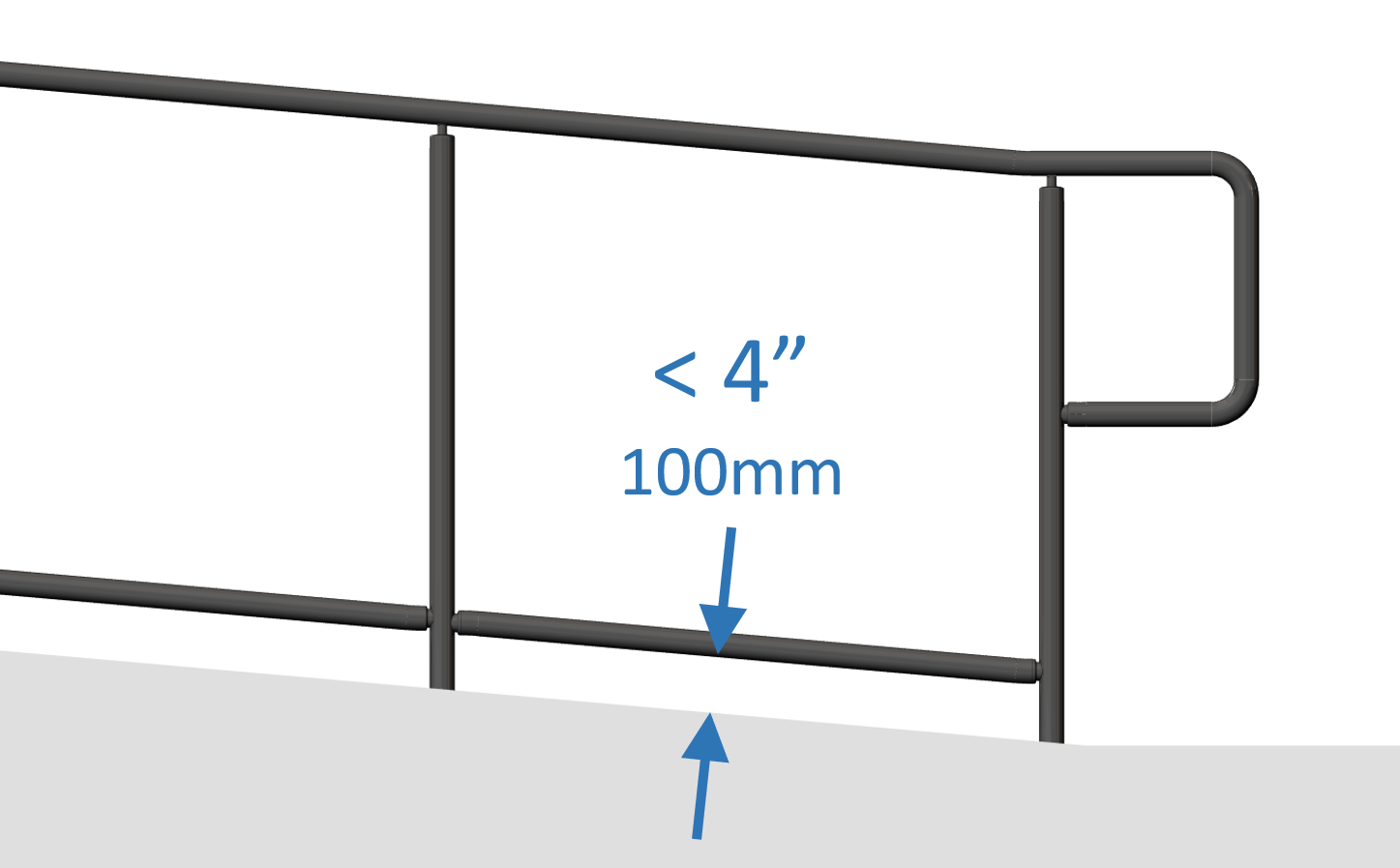 Slope Change
Slope Change
Ramps are required to have 12 inches of horizontal railing at the top and the bottom of the ramp. To do this, the handrail requires a slope change to transition to horizontal. This extension doesn’t need to travel in the same direction as the handrail and can turn corners if necessary, as long as it provides added support when transitioning on and off the ramp’s surface.
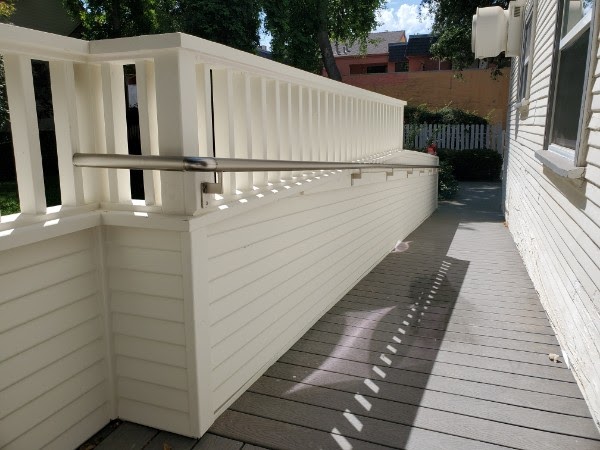 Meet ADA Requirements with Ease
Meet ADA Requirements with Ease
Promenaid makes installing handicap ramp handrails simple with our elegant wall returns, patented “L” brackets and adjustable elbows. Our ramp handrails can be purchased as part of a kit or assembled piecemeal to fit your ramp’s unique specifications. To see our handrails in action, find a dealer near you.
Meeting code requirements with Promenaid is easy. No matter what handrail you choose, you can rest assured that it will meet ADA requirements as well as those set out by the commercial and residential building codes. Our company was founded to increase mobility with attractive handrail solutions. Our ramp handrails are proudly manufactured in North America using sustainable materials and can go from our warehouse to your job site in as little as 24 hours.
Contact a representative at Promenaid today for more information on ramp handrail solutions.



